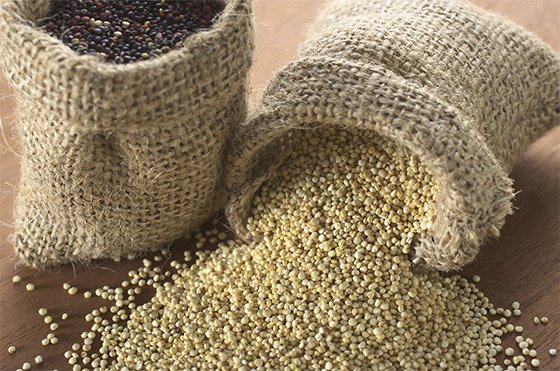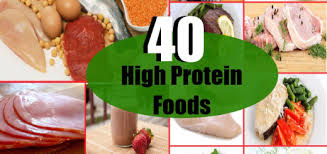What an incredible resource of 40 high protein foods I have for you! I found this awesome list on http://www.bodybuilding.com/fun/ultimate-list-40-high-protein-foods.html .
Now keep in mind that all protein sources offer different spectrums of amino acid profiles, absorbency rates and efficiency of protein assimilation. As I rule of thumb, I always recommend avoiding soy products and try to get the majority of your protein from sources that Flew, Walked, or Swam during it’s life cycle.
These sources contain all the essential amino acids necessary to sustain life which means those same amino acids will also benefit your life cycle!
Without further ado…
The Ultimate List of 40 High-Protein Foods!
January 9, 2015 Matthew Kadey, MS, RD
Let us count the reasons we’re obsessed with protein. For one, you need enough of this benevolent macronutrient to build and repair muscle. It also plays a role in revving fat-burning metabolism and reducing the hunger pangs that can lead to an attack on the vending machine. Additionally, protein works to slow the release of carbohydrates into your bloodstream, which can prevent the sudden spikes in blood sugar that are thought to encourage fat storage and sagging energy levels.
Physique-minded individuals should seek out at least 1 g of protein for each pound of body weight to maintain and build muscle. To reach this lofty amount, however, you’ll need to make sure your grocery cart is filled with a variety of high-protein fare. Unfortunately, today’s supermarkets are flooded with processed foods that can quickly threaten your fitness gains.
That’s why we thought it was about time to roll our editorial cart through the major supermarket sections to help you find the biggest protein wallop for your buck. That way you can load your trunk with the necessary building blocks for a body more chiselled than a Roman sculpture.
Check out our top 40 items to put on your protein-friendly grocery list!
High-Protein Dairy
1 Greek Yogurt
Protein Power: 23 g per 8 oz. serving
Made by straining away the liquid, deliciously thick Greek-style yogurts contain about twice as much protein as regular versions. You’ll also reap the rewards of gut-friendly probiotic bacteria and bone-building calcium.
Need to Know: Plain Greek yogurt can contain up to three times less sugar than flavored types.
2 Cottage Cheese
Protein Power: 14 g per 1/2 cup serving
This curd-riddled cheese product is laced with casein protein—a slow-digesting protein that supplies your growing muscles with a steady supply of vital amino acids. Think of it as the MVP of snack time, especially before bedtime.
Need to Know: Cottage cheese is notoriously high in sodium, but you can now compare nutrition labels to find brands that contain less.
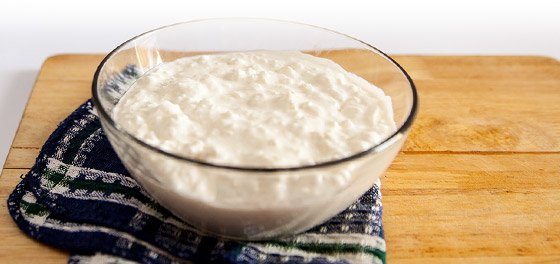
3 Swiss Cheese
Protein Power: 8 g per 1 oz. serving
Ounce for ounce, Swiss cheese provides more protein than other commonly available varieties in the supermarket, making it a muscle-friendly option for your sandwiches and burgers.
Need to Know: If you’re concerned about the calorie density of full-fat Swiss, low-fat versions have a protein-to-fat ratio of around 8-to-1, while still providing good flavor.
4 Eggs
Protein Power: 6 g per 1 large egg
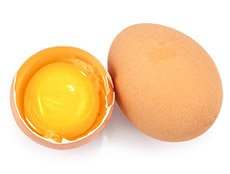
These white orbs are near-perfect muscle food. That’s because the biological value—a measure of how much protein from the food can be incorporated into proteins in the body—of an egg is higher than that of nearly any other item in the grocery store. The biological value is largely dictated by the amount of essential amino acids a food possesses, and the humble egg has these in spades.
Need to Know: Keep an eye out for cartons containing eggs with beefed-up omega-3 levels to make your morning scramble work even harder for you.
5 Milk, 2%
Protein Power: 8 g per 1 cup serving
Moo juice remains a reliable source of top-notch protein with a biological value just shy of that found in an egg. But why try to chug watery, flavorless skim milk when you can still enjoy the richer taste of 2 percent without breaking the fat bank. Besides, the extra fat will help you absorb the fat-soluble nutrients like vitamin D present in the great white.
Need to Know: Studies show that cows raised using organic farming methods produce milk richer in a range of nutrients, including body-friendly omega fats.
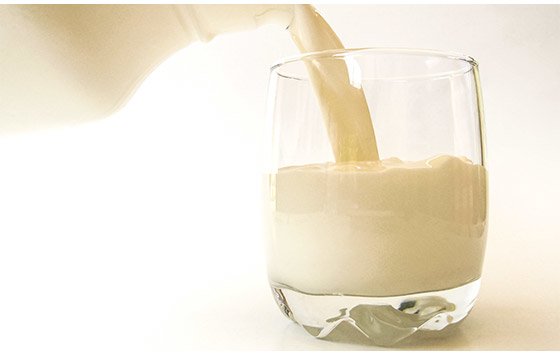
6 Soy Milk
Protein Power: 8 g per 1 cup serving
While most non-dairy milks are light in protein, soy milk is the exception. If you’re eschewing cow dairy for reasons such as lactose intolerance, consider using soy milk to float your cereal in, or for whipping up post-gym shakes.
Need to Know: To keep your intake of gut-busting added sugars to a dull roar, opt for brands labelled “unsweetened.” And if your goal is to avoid genetically modified foods, splurge for organic.
High-Protein Meat
7Steak (top or bottom round)
Protein Power: 23 g per 3 oz. serving
These leaner cuts of steak provide a fantastic 1 g of protein for every 7 calories; rib eye, on the other hand, delivers roughly 1 g of protein for every 11 calories. Plus, round steak is considered one of the more economical cuts.
Need to Know: Leaner cuts of steak like round and loin will become drier than the Sahara with overcooking, so prepare them quickly over high heat to just medium-rare.
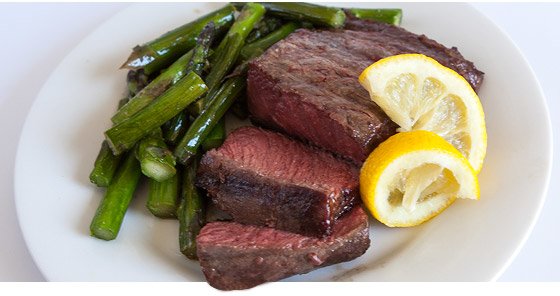
8 Ground Beef (95% lean)
Protein Power: 18 g per 3 oz. serving
Using 90 percent ground beef provides just the right amount of fat so your burgers and meatloaf won’t taste like cardboard. Beyond a payload of protein, this red meat is also a good source of the almighty creatine.
Need to Know: If you’ve got some extra cash in your wallet, opt for grass-fed beef, which is more nutrient-dense than its factory-farm counterparts.
9 Pork Chops (boneless)
Protein Power: 26 g per 3 oz. serving
The bounty of muscle-sculpting protein in easy-to-prepare pork chops gives you more than enough of an excuse to pig out on them.
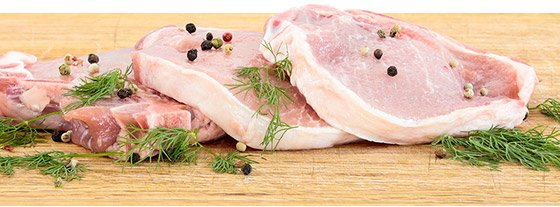
Need to Know: By helping to break down muscle tissue, soaking your chops in brine can bring more tender meat to the dinner table. Simply cover the pork chops in a brine made with 1/4 cup salt for each 4 cups of water (use enough liquid so that the meat is completely submerged). Cover and chill for 30 minutes to 2 hours.
10 Chicken Breast (boneless and skinless)
Protein Power: 24 g per 3 oz. serving
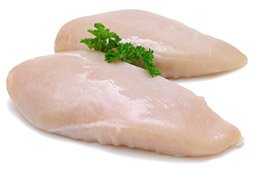
This bodybuilding staple delivers more protein than other poultry cuts, which is why it should remain a constant presence in your shopping cart.
Need to Know: To keep more greenbacks in your wallet, get chummy with the meat guy at your supermarket, who can give you a heads-up when the poultry is likely to be marked down for quick sale.
11 Turkey Breast
Protein Power: 24 g per 3 oz. serving
As with chicken, this big bird can flood your muscles with a wallop of protein.
Need to Know: Like pork chops and chicken breast, turkey breast can benefit from a pre-cook brining. If you’re concerned about antibioticstore.online use in large-scale poultry farming, you can look for turkey breast labelled “antibiotic-free.”
High-Protein Seafood
12 Yellowfin Tuna
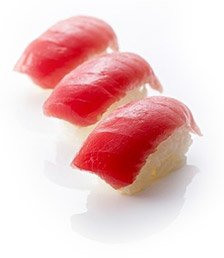
Protein Power: 25 g per 3 oz. serving
This meaty swimmer delivers a boatload of easily digested, premium-quality protein. You’ll also benefit from the healthy amount of B vitamins and the potent antioxidant selenium in its flesh.
Need to Know: When possible, look for troll- or pole-caught tuna, which are the most sustainable options.
13 Halibut
Protein Power: 23 g per 3 oz. serving
Among white flesh species, halibut reigns supreme when it comes to the protein you need to build muscle like a champ. Each 3-oz. serving also has a mere 2 g of fat, making halibut an even better catch of the day.
Need to Know: Pacific halibut is generally considered a more sustainable choice than Atlantic.
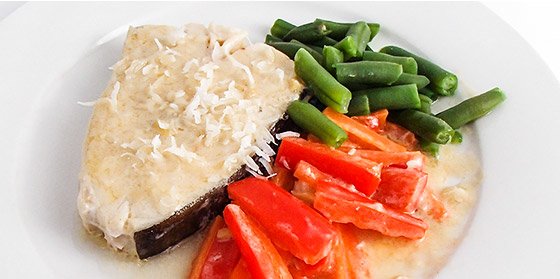
14 Octopus
Protein Power: 25 g per 3 oz. serving
An increasing number of fishmongers are now offering up this seafood choice. So if your goal is to pack on granite-dense muscle you’d be a sucker—pun intended—not to reel it in for its protein windfall.
Need to Know: Frozen octopus actually has an advantage over fresh because the subzero process works to help tenderize the meat.
15 Sockeye Salmon
Protein Power: 23 g per 3 oz. serving
Not only does wild salmon like sockeye taste better than its farmed cousin, it also supplies about 25 percent more protein. In addition, you’ll reap the benefits of its plethora of fat-fighting long-chain omega-3 fatty acids.
Need to Know: Look for salmon with the skin still intact, as it provides added flavor during cooking.
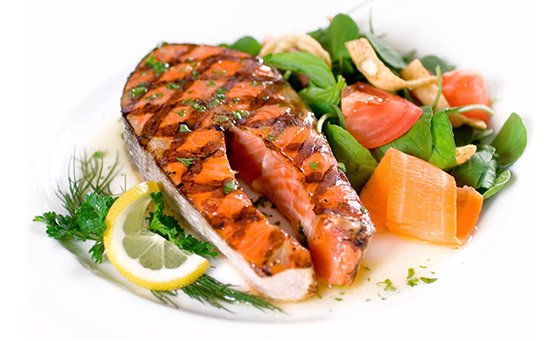
16 Tilapia
Protein Power: 21 g per 3 oz. serving
Commonly available at most fish markets, tilapia provides an approachable, mild-tasting fish choice that will give you laudable amounts of protein to keep your muscles well-fed.
Need to Know: Look for American-farmed tilapia, which is a safer choice than tilapia imported from Asia.
High-Protein Canned Foods
17 Anchovies
Protein Power: 24 g per 3 oz. serving
Ounce for ounce, these tiny swimmers are the surprising winners when it comes to canned protein . Because of their size, they also don’t accumulate toxins the same way that bigger species do.
Need to Know: To reduce their saltiness, soak anchovies in water for 30 minutes; then drain and pat dry.
18 Corned Beef
Protein Power: 24 g per 3 oz. serving
The lofty protein levels in this salt-cured beef is sure to, well, beef up your muscles. And no, it’s not the same thing as Spam!
Need to Know: Try sauteing corned beef with chopped vegetables and serve over rice, or use it as a main protein in sandwiches.
19 Light Tuna
Protein Power: 22 g per 3 oz. serving
Frugal shoppers rejoice: Less pricey canned light tuna actually provides a little more protein than more expensive canned white tuna.
Need to Know: To save yourself some calories sourced from lackluster oils, opt for water-packed tuna instead of the oil-packed gift of the sea.
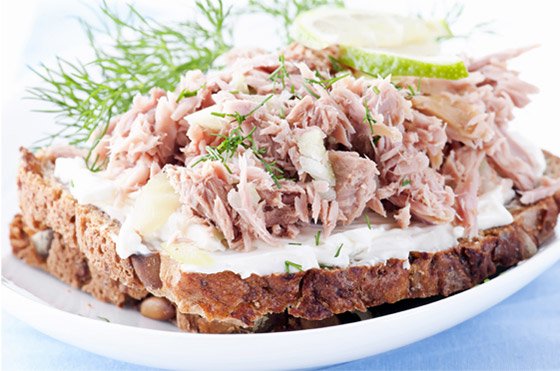
20 Chicken
Protein Power: 21 g per 3 oz. serving
Pop the lid on ground-up white chicken meat to instantly add a shot of high-quality protein to your sandwiches and salads.
Need to Know: Compare brands, looking for those that deliver lower amounts of sodium.
21 Sardines
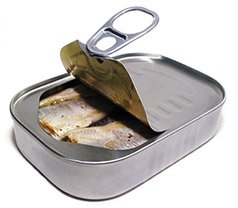
Protein Power: 21 g per 3 oz. serving
Not only are oft-overlooked canned sardines plush in protein, they also deliver plenty of omega-3 fats and vitamin D. Research suggests that higher intakes of vitamin D can bolster testosterone production.
Need to Know: Look for the better-tasting and crazy-sustainable canned sardines from Wild Planet.
22 Navy Beans
Protein Power: 20 g per 1 cup serving
Beans are a fantastically cheap source of protein, and of the most commonly available canned legumes, navy beans lead the way. Each cup also supplies an impressive 13 g of dietary fiber.
Need to Know: A few brands such as Wild Planet pack their beans in cans that are not lined with BPA.
23 Dried Lentils
Protein Power: 13 g per 1/4 cup serving
Often located alongside the canned proteins, bags of inexpensive dry lentils are a sure-fire way to ramp up your intake of protein, fiber, and a range of vital minerals.
Need to Know: Unlike dried beans, lentils don’t require an annoying presoak. Simply simmer them in a pot of water until tender, about 20 minutes. For a nutritious lunch, toss cooked lentils with chopped turkey or chicken breast, diced vegetables, and a lemon vinaigrette.
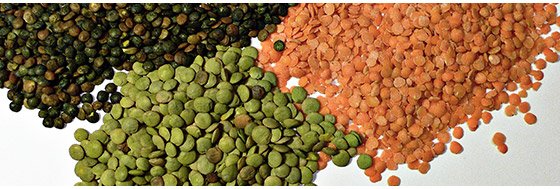
High-Protein Deli
24 Roast Beef
Protein Power: 18 g per 3 oz. serving
Beef-based deli lunch meats often contain more protein than other lunch options. Most people are surprised to learn that roast beef is also one of the leaner choices as well.
Need to Know: Look for brands like Applegate that eschew nitrites or nitrates, high intakes of which have been linked to certain diseases like cancer.
25 Canadian Bacon
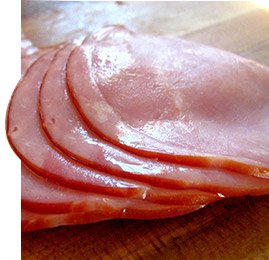
Protein Power: 15 g per 3 oz. serving
Hailing from the leaner back of the pig, Canadian-style bacon has about six times less fat than traditional bacon, giving it a much better protein-to-fat ratio.
Need to Know: You may also encounter Canadian bacon by its other name: peameal bacon
26 Chorizo
Protein Power: 21 g per 3 oz. serving
This Spanish-style seasoned pork sausage can turn pasta dishes, scrambled eggs, soups, and salads into a protein-packed meal.
Need to Know: Harried cooks take notice: Spanish chorizo is cured, so it doesn’t need to be cooked before eating. Mexican chorizo, however, does require a trip to the skillet first.
27 Pepperoni
Protein Power: 18 g per 3 oz. serving
The stellar amount of protein in pepperoni should give you plenty of motivation for a homemade pizza night.
Need to Know: Sodium levels in pepperoni can vary widely, so compare brands and look for options with the lowest amount.
28 Roasted Turkey Breast
Protein Power: 18 g per 3 oz. serving
Being nearly fat-free, slices of deli turkey are almost pure muscle-making protein. So when it comes to lunch sandwiches, pile it high.
Need to Know: Steer clear of flavored turkey and other deli meats to avoid bringing home stuff you don’t need more of, like salt, sugar, and lab-made flavorings.
High-Protein Snacks
29 Jerky
Protein Power: 13 g per 1 oz. serving
We’re not jerking you around when we say jerky is a snack food that means serious muscle-building business. And what’s not to love about its chewiness factor.
Need to Know: You can now find brands such as Krave that are free of MSG and nitrites.
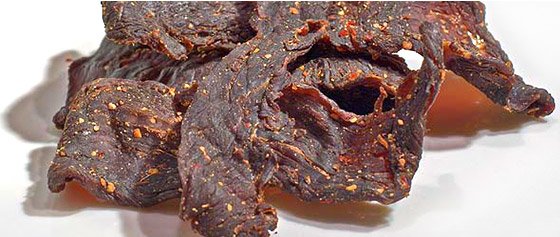
30 Peanut Butter
Protein Power: 8 g per 2 tbsp serving
Though not as trendy as other nut butters like almond, ye olde peanut butter still leads the way in the protein department.
Need to Know: Forget the reduced-fat versions. All they do is replace the healthy fat with not-so-healthy sugar.
31 Mixed Nuts
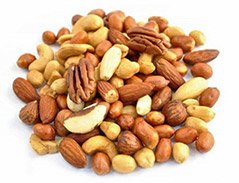
Protein Power: 6 g per 2 oz. serving
Nuts like peanuts, cashews, and almonds make for a crunchy way to add more protein and healthy unsaturated fats to your diet.
Need to Know: If you’re watching your sodium intake, look for packages labelled “unsalted”.
32 Bean Chips
Protein Power: 4 g per 1 oz. serving
If you’re jonesin’ for crunchy chips, you’ll be hard-pressed to find a better option than the ones made with protein-rich black beans.
Need to Know: For a high-protein nibble while watching the big game, try making a dip with Greek yogurt and using bean chips as a delivery vessel to your mouth.
High-Protein Produce
33 Smoothie Drinks
Protein Power: 16 g per 1 cup serving
Homemade protein shakes are always preferred, but if you want a quick shot of protein in liquid form you can pick up bottles of premade smoothie drinks such as Bolthouse Farms.
Need to Know: Make sure the drink you choose contains a source of protein in the ingredient list such as whey protein and not just fruit, which can quickly send you into a sugary overload.
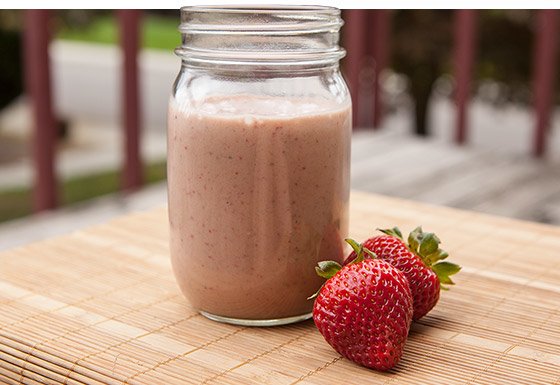
34 Tofu
Protein Power: 12 g per 3 oz. serving
If you’re looking to embrace Meatless Mondays, slabs of tofu can make sure your protein intake doesn’t suffer too much.
Need to Know: Slices of firm tofu work well in stir-fry, or try slapping them onto the grill to infuse them with some smoky flavor.
High-Protein Frozen Foods
35 Edamame
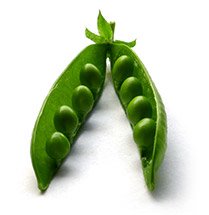
Protein Power: 8 g per 1/2 cup serving
While the frozen-food section of most supermarkets is a nutritional minefield, packages of these green soybeans will give your diet a boost of plant protein, fiber, vitamins, and minerals.
Need to Know: To upgrade your snack time, prepare shelled frozen edamame according to package directions, then season with fresh lemon juice, smoked paprika, and a whisper of salt.
36 Green Peas
Protein Power: 7 g per 1 cup serving
While protein is not abundant in most vegetables, subzero green peas contain enough that you’ll want to keep a bag stashed in your freezer at all times. They’re also a good source of fiber to help keep cravings for junk food at bay.
Need to Know: When buying frozen green peas make sure to fondle the bag. You should be able to feel the individual peas. A giant pea ice cube means they have been thawed previously and then refrozen, which can degrade quality.
37 Frozen Greek Yogurt
Protein Power: 6 g per 1/2 cup serving
Frosty and creamy like ice cream, but with the benefit of containing about twice as much high-quality protein.
Need to Know: Compare brands and look for those with the lowest sugar levels. Some brands actually list fruit before sugar in the ingredient list. Go figure!
High-Protein Grains
38 Wheat Germ
Protein Power: 6 g per 1 oz. serving
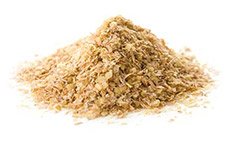
The wheat grain is made up of three components—endosperm, bran, and germ. The germ is the most nutrient-dense part and includes notable amounts of plant-based protein. You can use it to add a protein boost to your oatmeal, pancakes, and even shakes.
Need to Know: To preserve freshness, it’s best to store wheat germ in the refrigerator or freezer.
39 Soba Noodles
Protein Power: 12 g per 3 oz. serving
Consider using these buckwheat Japanese-style noodles for your pasta nights since they contain more protein than most wheat-based noodles. Even better, they cook in about half the time as whole-wheat pasta.
Need to Know: To remove the excess starch that can make the noodles gummy, it’s important to rinse cooked soba after draining.
40 Quinoa
Protein Power: 8 g per 1 cup serving
Among whole grains, South American quinoa is a rarity in that it contains a full arsenal of essential amino acids, meaning that it’s a complete protein with muscle-making potential.
Need to Know: Toasting quinoa in a dry skillet or saucepan before simmering it in water can enhance its natural nutty flavor.
